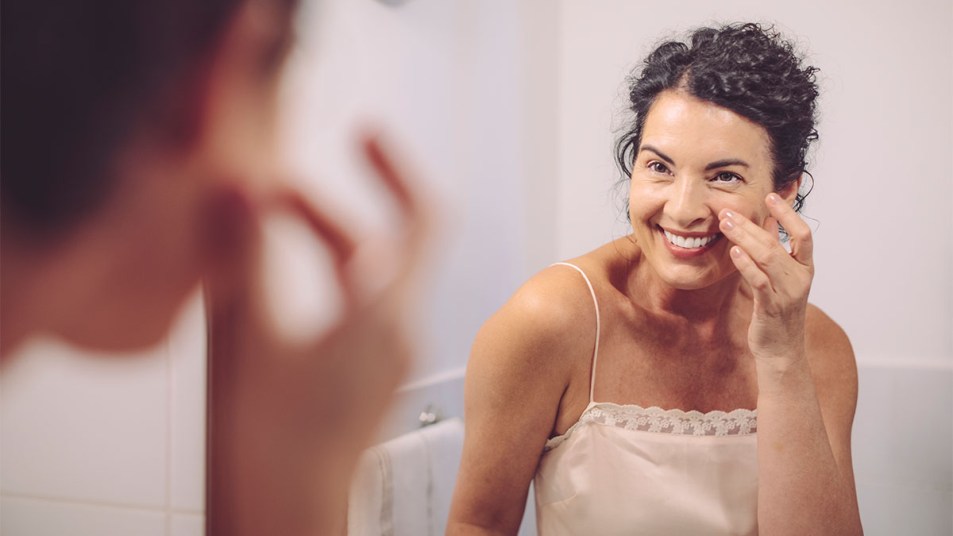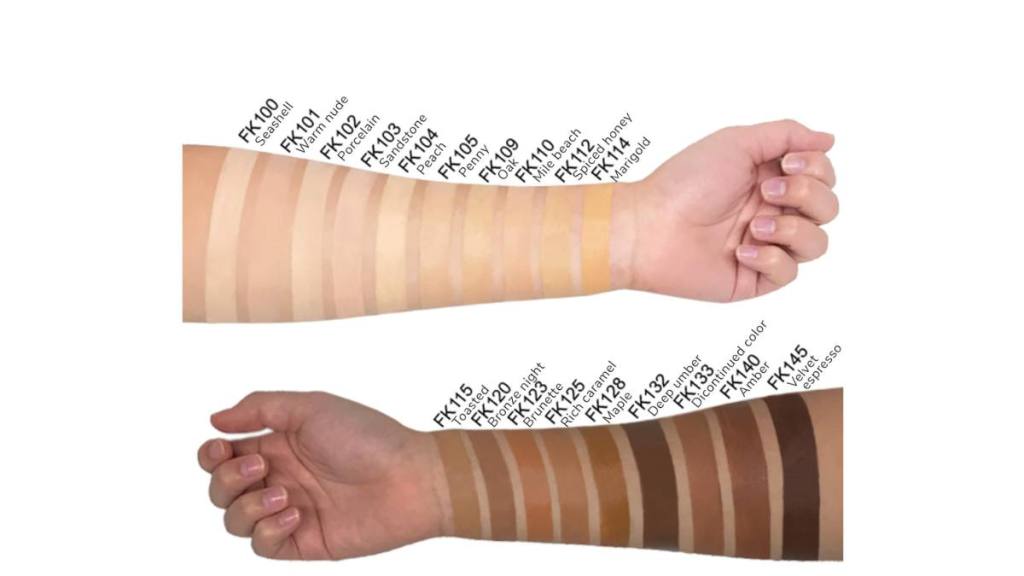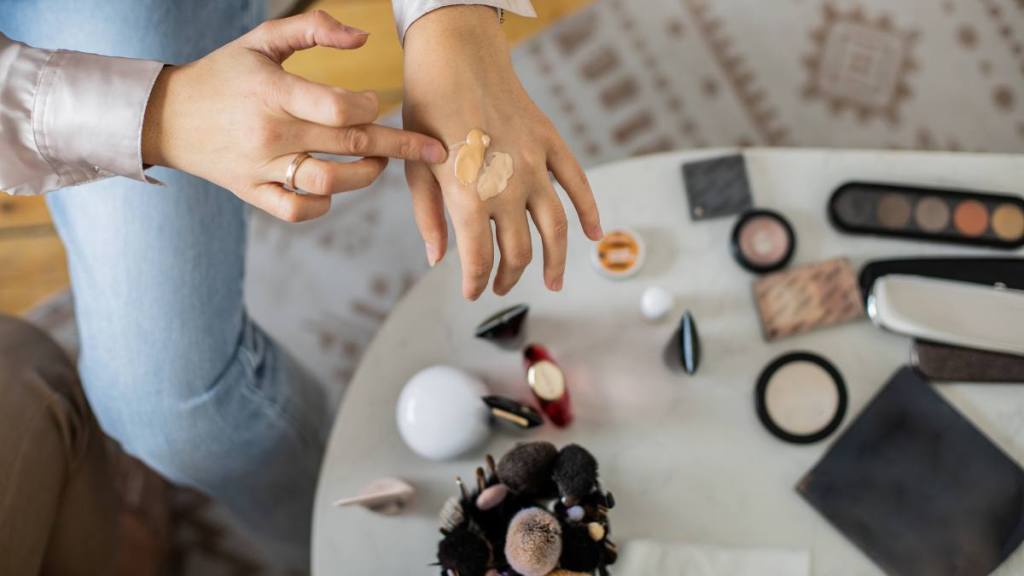How to Choose a Foundation Shade: 4 Easy Step to Master the Match
Makeup pros help you choose the closest shade for your skin tone

When choosing the right makeup, foundation is undoubtedly the most complicated part of the process. Too dark, and you’ll have a stripe where your jawline meets your neck. Too light, and you could end up looking like a ghost. But it’s important because it sets the stage for the rest of your makeup. If that’s off, nothing will look right — no matter how well you blend. So, how to choose a foundation shade when there are so many options available? It can seem daunting, but with a few tips and tricks, you can find a match that suits your skin perfectly. Keep reading for a step-by-step guide to help you choose the right foundation shade for you.
How to choose a foundation shade: Follow these 4 easy steps
1. Determine your skin tone
Some brands offer a limited selection of shades, while others have expansive ranges to accommodate a wide array of skin tones and undertones. “The beauty industry has been making strides in inclusivity, with more brands expanding their shade ranges to cater to diverse skin tones. Determining your skin tone helps you narrow down some shades to choose from,” says makeup pro Genn Shaughnessy, who has worked with Carrie Underwood and Judy Gree.
Dyana Aives, celebrity makeup artist for beauty on-demand service Ring My Belle, who has worked with Melissa Etheridge and Amy Schumer, says there are five primary skin tones to consider:
1. Fair skin tone: Refers to individuals with lighter skin who tend to burn or freckle in the sun. Fair skin tones often have pink or peach undertones (more on that in a minute).
2. Light skin tone: Light skin is slightly darker than fair skin but still falls on the lighter end of the spectrum. Light skin tones can have a range of undertones, including pink, peach or olive (if you’re bordering on medium or tend to be more medium after being out in the sun).
3. Medium skin tone: This is usually a balance of warm and cool undertones and a mix of yellow and pink undertones.
4. Tan skin tone: Tan skin tones are characterized by a warm, golden or olive undertone. They typically have a deeper complexion with a sun-kissed glow.
5. Deep skin tone: Deep skin tones have rich, dark complexions with deeper undertones. These undertones, such as deep brown, ebony or even mahogany, can range from warm to cool.

Also, your skin tone may vary slightly throughout the year due to sun exposure, so be prepared to adjust your foundation shade accordingly. “Every brand has a range of colors, sometimes listed light-dark, and others listed as a number or name range. Thankfully, most brands now have color charts with photos of faces you can relate to. You’ll know if you’re the lightest, darkest or somewhere between that range. Refer to their color charts and images of models in their foundations and see what best suits you,” suggests Shaughnessy.
2. Determine your undertone
You have a skin tone, and then you have an undertone, which refers to the underlying hue that affects the overall color of your skin. It’s different from the overtone, which is the color you see on the surface of your skin. Determining your undertone can help you choose products that harmonize with your natural complexion.
It’s important to note that undertones differ from skin tones, which refer to how light or dark your skin is. You can have a light, medium or dark skin tone with warm, cool or neutral undertones.
“Even though your skin tone color may vary depending on the time of year, your undertone will always remain the same,” says Shaughnessy.
- Warm undertones: If your veins appear greenish and gold jewelry complements your skin better than silver, you likely have warm undertones.
- Cool undertones: If your veins appear bluish or purple, and silver jewelry looks better on you than gold, you probably have cool undertones.
- Neutral undertones: If it’s hard to distinguish whether your veins are blue or green, and you can wear gold and silver jewelry without one looking notably better, you may have neutral undertones.
3. Test your shade

You can try and make your best guess on shade but you won’t really know for sure until you test it. “You’re not going to know how close your guess is until you test it on your skin, so before you buy any foundations and waste money, go to a store with testers to try out the brands you love,” says Shaughnessy. “Many beauty stores offer foundation samples so you can try them at home before purchasing. This allows you to see how the foundation looks in various lighting conditions and how it wears throughout the day,” she adds.
When testing your foundation, “lighting is most important. You should be doing this in a well-lit area, not in a dingy bathroom or bedroom. Natural light works great too if you need to go near a window or outside,” advises Shaughnessy.
“Whenever I work with a new client, I look at their face, neck and chest. Then I take the foundation shade I think they are, swipe a small sample on the side of their face, under the chin and neck and massage it with my finger or a foundation brush. Aside from the difference in texture and coverage, you really shouldn’t see much of it, and the color should blend in so it’s an exact match or so close you can barely see the difference,” she says.
4. Let it set
Allow the foundation to set for a few minutes after applying. Sometimes, a foundation may oxidize or darken slightly after it sets. “Oxidation in foundations refers to a chemical reaction that occurs when the foundation comes into contact with air, the oils on your skin or other substances. This reaction can cause the foundation to change color or darken over time, often resulting in a shade that looks different from when it was initially applied,” explains Shaughnessy.
When a foundation oxidizes, “it may change the undertone or develop a different hue altogether. For example, a foundation that initially matches your skin tone may look orange, pink or grayish as it oxidizes. Foundations with certain types of pigments, oils, iron oxides or titanium dioxide oxidize more quickly,” says Shaughnessy.
If it’s not an oxidation issue and it still looks orange: “You most likely have cool undertones and are mistakenly using a foundation meant for warm undertones, which results in an orange hue. Instead, switch to a cool or neutral foundation shade,” advises Shaughnessy.
If it looks pink: “Similar to the issue with orange-toned foundation, using a foundation with the wrong undertone for your skin can result in a pinkish hue. For example, if you have warm or neutral undertones and use a foundation with cool undertones, it will appear pink on your skin,” so you should switch to a warmer shade,” she adds.
It may be a matter of trial and error, but with a little patience, you’ll find the right shade for you in no time!
For more makeup tips, click through these stories:
Mascara Cocktailing Is the Viral Beauty Trick That Makes Lashes Look Thicker + Longer Instantly
8 Setting Powders for Mature Skin That Are the Perfect Final Step in Your Makeup Routine













